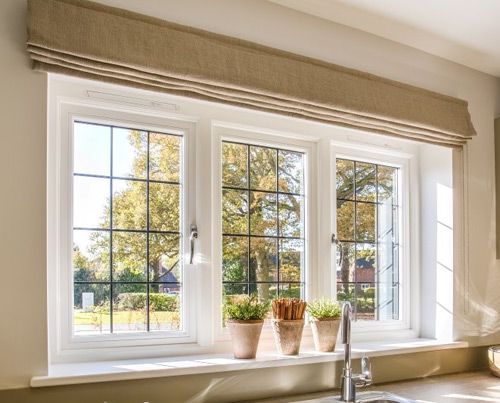
 In 2014, the UK timber window market grew by 17.1% to 739,000 frames and by 25.4% to £439million in installed value, with growth set to continue until at least 2019*. That’s according to Palmer Market Research, whose latest study on the wood and aluminium/timber composite window markets in the UK has just been published.
In 2014, the UK timber window market grew by 17.1% to 739,000 frames and by 25.4% to £439million in installed value, with growth set to continue until at least 2019*. That’s according to Palmer Market Research, whose latest study on the wood and aluminium/timber composite window markets in the UK has just been published.
Amidst a rising demand for housing, which has reached an 11 year high with further growth expected, Robert Palmer forecasts that the market share enjoyed by premium window materials (wood, aluminum and aluminum/timber) is expected to grow at the expense of PVC-U windows, which will decline whether measured by unit or installed value.
Robert Palmer said: “Wood’s share of the total window market based on volume moved up in 2014 from 10 to 11% but by installed value it grew from 18 to 20%. Overall, the wood window market in housing is forecast to outperform the window market as a whole between 2014 and 2019, growing by 10% in real terms to 811,000 frames. Along with composites and aluminium, arguably competitor premium products, wood, long term, is gaining share.”
Sean Parnaby, chairperson of the Wood Window Alliance (WWA) said: “By sector, WWA members account for 62% of timber windows sold in the new build market and 52% of the social housing refurbishment market, which will continue to be key areas for us to support in 2016. However, our real opportunity lies in the very much larger home improvement sector that represents 69% of all wood windows sold in the UK. Significant developments in technology have resulted in improvements in performance which have reinforced wood windows as the sustainable, energy-efficient and cost-effective choice.”
The Palmer report shows how the structure of the market has changed, with wood windows – mostly now factory-finished – achieving a significant premium over PVC-U. While, in real terms, the average installed price for a PVC-U window has remained flat over the past 14 years at £271, the average installed price for wood windows has doubled to £594. Much of this increase has come from the new housing sector, where increasingly sophisticated windows are being specified.
The Palmer report also notes that the aluminium/timber composites window market in housing grew by 19.2% in 2014 to 174,000 frames and by 30.2% to £77million in installed value. Unlike the wood market, the composite market in housing is dominated by new build.
Although casement windows make up the bulk of wood window sales (58%), vertical sliding sash windows remain dominated by timber, making up 27% of all wood window sales, compared with just 6% for all materials. WWA members make up 13% of the triple glazing sector against 6% for all wood window manufacturers.
Sean Parnaby added: “Today’s high performance wood windows unquestionably enhance the character and street appeal of a building and offer fantastic long-term value – it is no surprise that more and more consumers are realising that they are worth a larger upfront investment. The amazing thing for me is that, despite centuries of use, each year we see new material and paint developments offering an ever extending range of design and colour options – double, triple glazed, highly energy- efficient options meeting exacting PassivHaus requirements, whilst at the same time delivering inherent sustainability due to the low carbon, low impact manufacturing processes. The wood age is upon us!”



